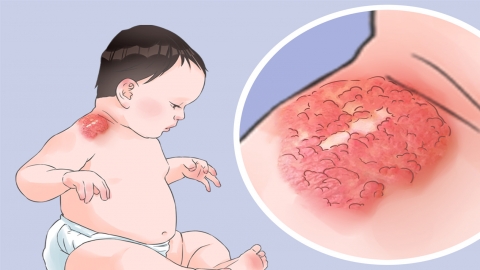Why do so many babies have hemangiomas nowadays?
Currently, hemangiomas in infants are relatively common and are generally associated with abnormal embryonic development, genetic factors, hormonal influences, environmental factors, and improved diagnostic techniques. The details are as follows:

1. Abnormal Embryonic Development: During embryonic development, disturbances in the formation of the vascular system—such as abnormal proliferation or incomplete differentiation of blood vessel buds—can lead to excessive growth of local vascular tissue, resulting in hemangioma. These abnormalities are often related to changes in the maternal environment during early embryogenesis and represent a common cause of infantile hemangiomas.
2. Genetic Factors: Some hemangiomas show familial tendencies, and genetic abnormalities may increase the likelihood of developing the condition. Hereditary factors can disrupt the regulatory mechanisms of blood vessel development, increasing the risk of hemangiomas in offspring; however, not all cases are directly linked to genetics.
3. Hormonal Influences: Fluctuations in maternal hormone levels during pregnancy, especially changes in estrogen and progesterone, may stimulate the proliferation of fetal vascular endothelial cells, promoting abnormal blood vessel growth and increasing the likelihood of hemangiomas after birth. The regulatory effect of hormones on vascular development is particularly significant during the embryonic period.
4. Environmental Factors: Exposure of the mother to chemicals, radiation, viral infections, or use of certain medications during pregnancy may interfere with normal fetal vascular development and trigger hemangioma formation. Adverse environmental factors increase the risk of vascular abnormalities by disrupting the microenvironment of embryonic development.
5. Advancements in Diagnostic Technology: With the wider availability of medical imaging techniques such as ultrasound, small hemangiomas in infants can now be detected earlier and more accurately. Previously undetected mild cases are now being diagnosed, which objectively contributes to the perception that the incidence of infantile hemangiomas is rising.
If parents notice any suspicious lumps resembling hemangiomas on their baby, they should seek timely medical evaluation for accurate diagnosis. Following the doctor’s advice regarding observation or treatment and regularly monitoring changes in the lesion is important. There is no need for excessive anxiety, as most infantile hemangiomas either improve spontaneously over time or can be effectively treated and fully resolved with appropriate management.







